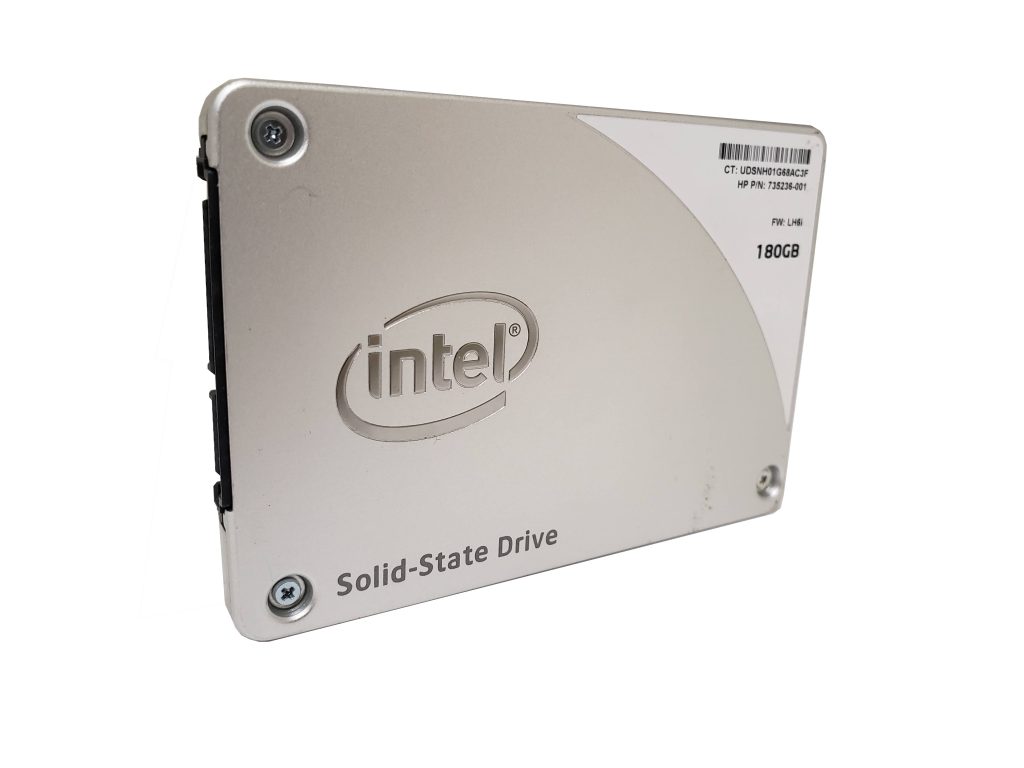25nm G3 is Finally Here
by Anand Lal Shimpion March 28, 2011 11:08 AM EST
- Posted in
- IT Computing
- Storage
- SSDs
- Intel
- Intel SSD 320
194 Comments
|
194 Comments
The Same ControllerSpare Area, 3Gbps Only, AES-128Random & Sequential PerformanceAnandTech Storage Bench 2011: Much HeavierAnandTech Storage Bench 2011 — Light WorkloadPerformance vs. Transfer SizeAS-SSD Incompressible Sequential PerformanceOverall System Performance using PCMark VantageSYSMark 2007AnandTech Storage Bench 2010TRIM PerformancePower ConsumptionFinal Words
It’s called the Intel SSD 320, but the part number should give away just what we’re looking at here:
This is the long awaited third generation Intel based SSD. This is the G3. And at this point it’s around 6 months late.
Back then it was simply called the Postville Refresh on Intel’s roadmaps (Postville was the 34nm Intel X25-M G2). It would use 25nm Intel NAND, feature improved performance and full disk encryption — all behind a 3Gbps SATA interface.
When I spoke with Intel about the drive last year, all indications pointed to it being faster than drives based on SandForce’s SF-1200 controller. And it is:
|
Intel SSD 320 300GB vs. Corsair Force F120 |
||||
|
|
AT Storage Bench 2011 (Heavy) |
AT Storage Bench 2011 (Light) |
||
|
Corsair Force F120 |
120.1 MB/s |
155.  9 MB/s 9 MB/s |
||
|
Intel SSD 320 300GB |
132.8 MB/s |
161.7 MB/s |
||
Without turning to any real time compression/deduplication techniques, Intel has built a drive that’s faster than the SF-1200. You also get that famed Intel SSD reliability:
There’s just one issue. The SF-1200 was the king of 2010. This year is shaping up to be all about the SF-2200 and the G3 isn’t quite as competitive there. Intel realized this as well and thus we got the Intel SSD 510 to address the high performance market. Intel claims the 510 should have the same failure rate as the 34nm X25-M G2 at ~0.6% per year.
The Intel SSD 320 by comparison is aimed at the mainstream market. Remember that’s what the M in X25-M always stood for to begin with. As a result we get lower pricing:
|
Intel SSD Comparison |
||||||||||||
|
|
X25-M G2 160GB |
Intel SSD 320 40GB |
Intel SSD 320 80GB |
Intel SSD 320 120GB |
Intel SSD 320 160GB |
Intel SSD 320 300GB |
Intel SSD 320 600GB |
SSD 510 120GB |
SSD 510 250GB |
|||
|
User Capacity |
149GB |
37GB |
74GB |
111GB |
149GB |
279GB |
558GB |
111GB |
232GB |
|||
|
Random Read Performance |
Up to 35K IOPS |
Up to 30K IOPS |
Up to 38K IOPS |
Up to 38K IOPS |
Up to 39K IOPS |
Up to 39.  5K IOPS 5K IOPS |
Up to 39.5K IOPS |
Up to 20K IOPS |
Up to 20K IOPS |
|||
|
Random Write Performance |
Up to 8.6K IOPS |
Up to 3.7K IOPS |
Up to 10K IOPS |
Up to 14K IOPS |
Up to 21K IOPS |
Up to 23K IOPS |
Up to 23K IOPS |
Up to 8K IOPS |
Up to 8K IOPS |
|||
|
Sequential Read Performance |
Up to 250MB/s |
Up to 200MB/s |
Up to 270MB/s |
Up to 400MB/s (6Gbps) |
Up to 500MB/s (6Gbps) |
|||||||
|
Sequential Write Performance |
Up to 100MB/s |
Up to 45MB/s |
Up to 90MB/s |
Up to 130MB/s |
Up to 165MB/s |
Up to 205MB/s |
Up to 220MB/s |
Up to 210MB/s (6Gbps) |
Up to 315MB/s (6Gbps) |
|||
|
Price |
$404 |
$89 |
$159 |
$209 |
$289 |
$529 |
$1069 |
$284 |
$584 |
|||
It’s still early in the 25nm ramp, but the 25nm Intel SSD 320 is cheaper than the 34nm Intel SSD 510.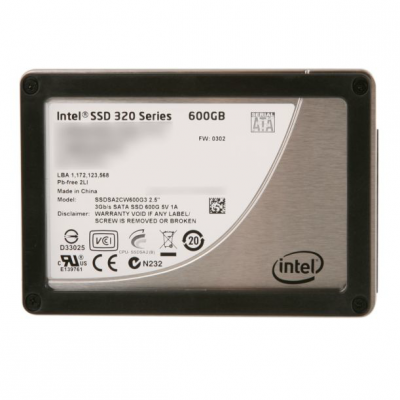 The only issue is that OCZ is very competitive with its pricing as well and compared to the Vertex 2, Intel’s SSD 320 isn’t really any cheaper. Intel likes to maintain its 65% profit margins so even though it makes the NAND and the controller in the 320, we’re unlikely to see these drives drop below competitive pricing.
The only issue is that OCZ is very competitive with its pricing as well and compared to the Vertex 2, Intel’s SSD 320 isn’t really any cheaper. Intel likes to maintain its 65% profit margins so even though it makes the NAND and the controller in the 320, we’re unlikely to see these drives drop below competitive pricing.
Intel expects the 25nm SSD 320 to be even more reliable than the 510 or X25-M.
The Same Controller
The Intel SSD 320, like the 310 and X25-M before it, uses an Intel branded controller. Opening up the 320 reveals a near identical controller to what we saw in the 34nm X25-M G2 housing:
You’ll notice the part number is identical to 2009’s X25-M G2 controller. In fact, it’s the same controller. Apparently the G2 controller had a number of features on-die, but not implemented in firmware. Things like full disk encryption and NAND redundancy never made it out in G2 but are here in the 320 all thanks to new firmware. And no, G2 owners aren’t getting it.
And no, G2 owners aren’t getting it.
Intel’s X25-M G1 Controller
Intel’s X25-M G2 Controller
Intel’s SSD 320 Controller
Since the controller hasn’t changed, the basic architecture of the SSD hasn’t changed either. Intel still doesn’t store any user data in its external DRAM cache and there’s still a 256KB on-die SRAM.
64MB 166MHz SDRAM
Next to the Intel controller is a 64MB 166MHz SDRAM device, now made by Hynix. You’ll notice that the DRAM chip is a lot smaller than what we’ve seen in previous X25-M generations, despite growing in capacity. Intel actually turned to mobile SDRAM for use in the SSD 320 to help save on power. While the X25-M G1 and G2 both used a conventional 3.3V SDRAM device, Intel moved to a 1.8V mobile SDRAM chip with the 320.
Intel X25-M G1: 16MB 166MHz SDRAM
Intel X25-M G2: 32MB 133MHz SDRAM
Intel always prided itself on not storing any user data in its DRAM cache. The external DRAM is only used to cache mapping tables and serve as the controller’s scratchpad. In the event of a sudden loss of power, Intel only has to commit whatever data it has in its SRAM to NAND. To minimize the amount of data loss in the event of a sudden power failure, Intel outfitted the SSD 320 with an array of six 470µF capacitors in parallel.
The external DRAM is only used to cache mapping tables and serve as the controller’s scratchpad. In the event of a sudden loss of power, Intel only has to commit whatever data it has in its SRAM to NAND. To minimize the amount of data loss in the event of a sudden power failure, Intel outfitted the SSD 320 with an array of six 470µF capacitors in parallel.
We’ve seen large capacitors on SSDs before, primarily the enterprise SandForce drives that boast a 0.09F supercap. Intel claims that for its design a single large capacitor isn’t necessary given the minimal amount of data that’s cached. It further claims that an array of multiple capacitors in parallel allows for much better reliability — if one capacitor fails the array is still useful (vs. a single point of failure in the case of the supercap).
Spare Area, 3Gbps Only, AES-128
The Same ControllerSpare Area, 3Gbps Only, AES-128Random & Sequential PerformanceAnandTech Storage Bench 2011: Much HeavierAnandTech Storage Bench 2011 — Light WorkloadPerformance vs.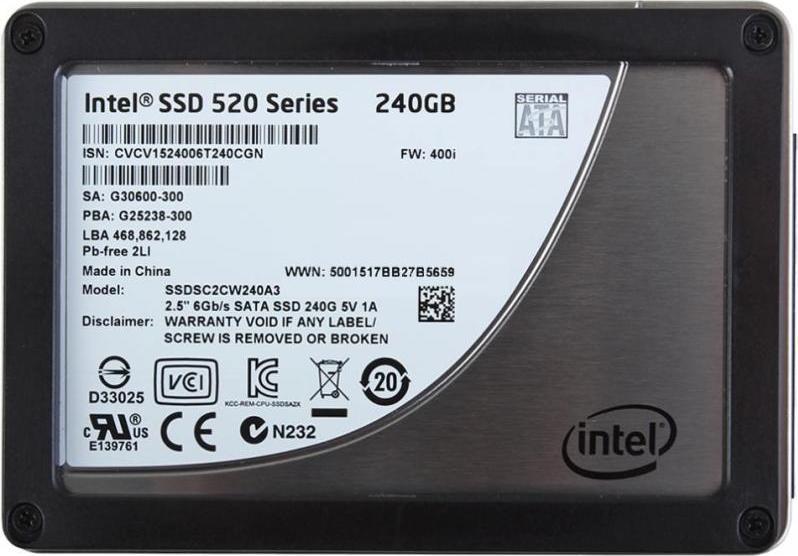 Transfer SizeAS-SSD Incompressible Sequential PerformanceOverall System Performance using PCMark VantageSYSMark 2007AnandTech Storage Bench 2010TRIM PerformancePower ConsumptionFinal Words
Transfer SizeAS-SSD Incompressible Sequential PerformanceOverall System Performance using PCMark VantageSYSMark 2007AnandTech Storage Bench 2010TRIM PerformancePower ConsumptionFinal Words
Tweet
PRINT THIS ARTICLE
Intel 320 Series 300GB SSD review — Storage
Intel’s X25-M will live long in our memories as the drive that championed the growth of solid-state storage in consumer PCs, but the best-selling SSD is now beginning to show its age.
In recent weeks, expectations of what an SSD can achieve have ascended to new heights following the release of various high-end models equipped with a high-speed SATA 6Gbps interface — these include Intel’s own 510 Series, Crucial’s C400 and OCZ’s benchmark-busting Vertex 3.
Speeds have soared beyond the 500MB/s mark and certain drives have come close to saturating the bandwidth available to the SATA 6Gbps standard.
The increase in performance has been nothing short of astonishing, but as we’ve stated in recent reviews, most consumers will find it difficult to discern between a fast SSD and a very-fast SSD during everyday use. And, while manufacturers continue to take giant strides in performance, the criteria that arguably matter more to consumers — price and capacity — haven’t shown major signs of improvement.
And, while manufacturers continue to take giant strides in performance, the criteria that arguably matter more to consumers — price and capacity — haven’t shown major signs of improvement.
What we need is a mid-range drive that offers strong all-round performance with proven reliability at a lower per-GB price. Asking a lot? Perhaps, but Intel’s hoping to deliver with a new third-generation successor to its mainstream X25-M.
Dubbed the Intel SSD 320 Series, this third-generation drive claims to maintain the high read throughput of the second-generation X25-M while more than doubling sequential write speeds, improving reliability, increasing capacity and lowering cost by as much as 30 per cent.
That’s a tempting formula, but can Intel really deliver on all four fronts — performance, reliability, capacity and cost?
Inside the SSD 320 Series
What’s surprising about the SSD 320 Series is that it isn’t an entirely new design. The drive’s branding may have changed to fit in with Intel’s new 3xx (SATA 3Gbps) and 5xx (SATA 6Gbps) naming scheme, but the 320 is effectively a second-generation X25-M armed with a handful of under-the-hood improvements.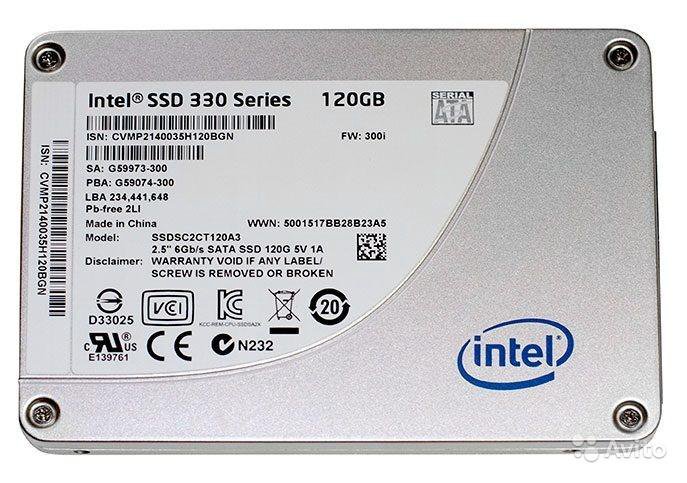
Proving that point, you’ll find a familiar-looking Intel PC29AS21BA0 controller seated at the heart of the drive. That’s the same controller used in the second-gen X25-M, and yes, that means the third-gen 320 Series is constrained to a SATA 3Gbps interface.
This is a drive that won’t shatter benchmarks, but there are a number of noteworthy improvements in and around the Intel controller, including a larger 64MB Hynix cache and the implementation of cheaper-to-produce 25nm NAND flash memory.
Built by Intel itself, the 20 multi-level cell 16GB memory chips (10 on each side of the PCB) are hooked up to 10 NAND flash channels and provide our review sample with a total capacity of 320GB. A portion of that is set aside for over-provisioning, leaving us with a formatted capacity of 297GiB.
Plenty of room to play with, and the introduction of high-density 25nm memory has allowed Intel to introduce larger-sized models. In addition to the standard 40GB (£80), 80GB (£145), 120GB (£185) and 160GB (£250) capacities, the 320 Series SSD is available in 300GB (£440) and 600GB (£925) versions — the latter of which represents new territory for 2.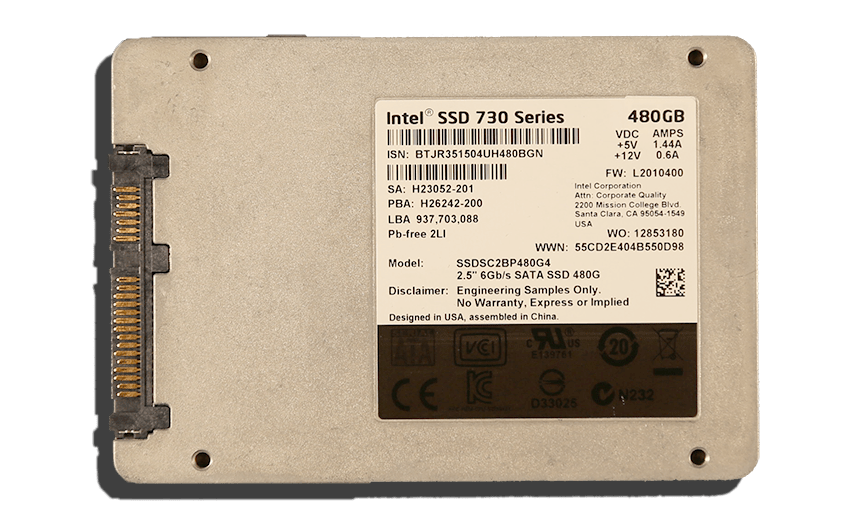 5in SSDs.
5in SSDs.
Capacity is on the up, and performance nudges forward, too. A combination of factors — including a new firmware and an increase in memory page size from 4KB to 8KB — has bumped read and write performance up to 270MB/s and 220MB/s, respectively.
That’s comfortably higher than the 250MB/s and 100MB/s maximums available to its predecessor, the X25-M, but Intel’s write performance remains closely tied to drive capacity. Buyers beware; the 220MB/s sequential write performance is applicable only to the range-topping 600GB model, and write throughput drops down to as little as 45MB/s on the entry-level 40GB drive.
Added peace of mind
Intel prides itself on SSD reliability, and the 320 Series product range attempts to enhance that reputation.
In addition to Intel’s existing validation process — which we’re told includes over 5,000 unique tests — the 320 Series SSD introduces 128-bit AES encryption to help prevent data loss in the event that a PC is lost or stolen, and enough over-provisioned NAND flash memory to protect the user’s data against the failure of a whole NAND die.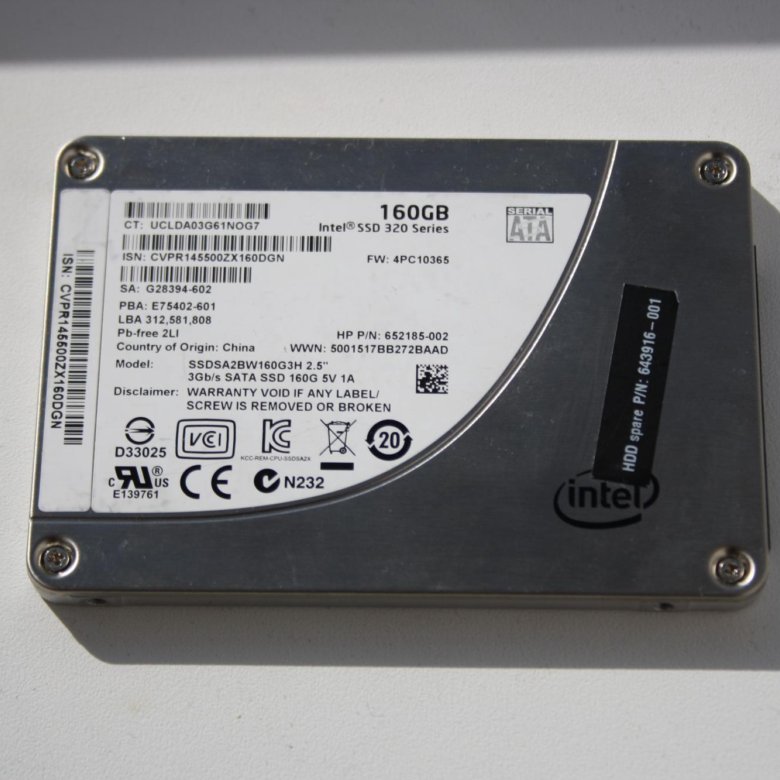
Preparing for a variety of scenarios, the drive also features Intel’s «power-loss protection scheme», through which half-a-dozen capacitors provide enough energy for the SSD to write cached data to the NAND in the event of system power loss.
Such features are traditionally exclusive to enterprise-specific models, but by outfitting the 320 Series with all of the aforementioned, Intel’s able to target the same drive at both consumer and enterprise markets.
And let’s not forget, like all previous Intel SSDs, the 320 Series is bundled with two free software utilities; the Intel Data Migration tool and the Intel SSD Toolbox — both of which are excellent.
A comprehensive set of upgrades make this an interesting SSD, but does this third-generation drive have what it takes to compete against the new breed of SATA 6Gbps competitors?
80 GB Intel 320 Series SATA II 2.5″ SSD Review and Test GECID.com.
::> Drives
>2011
> IT —
09-07-2011
On March 28, 2011, Intel began mass production of the 320 series solid state drives, which are the third generation of SSDs. This series has already made quite a splash on the World Wide Web. This was primarily due to the architecture of the model itself. You all remember the successful budget series from Intel developers — SSD X25, in this case we are considering models equipped with MLC flash NAND. So the new series is an improved «old» model of the drive, which uses flash memory manufactured using 25 nm technology, but with a number of some design changes, which we will tell you about. Also, attention to the model was drawn by the fact that the manufacturer, after the devices entered the market, increased the warranty period from three to five years. nine0003
This series has already made quite a splash on the World Wide Web. This was primarily due to the architecture of the model itself. You all remember the successful budget series from Intel developers — SSD X25, in this case we are considering models equipped with MLC flash NAND. So the new series is an improved «old» model of the drive, which uses flash memory manufactured using 25 nm technology, but with a number of some design changes, which we will tell you about. Also, attention to the model was drawn by the fact that the manufacturer, after the devices entered the market, increased the warranty period from three to five years. nine0003
Appearance and packaging
An 80 GB Intel 320 Series SATA II 2.5″ SSD was tested as an engineering sample. Of course, we cannot fully evaluate the printing and packaging, but we cannot
The contents of the packaging of our test sample is exclusively a drive, packed in a dense plastic bag with an inscription emphasizing that we have an engineering sample. The 80 GB Intel SSD 320 SSD itself has an external external metal case with a sticker showing information about the place of production (Taiwan), SATA interface bandwidth (3 Gb / s), storage capacity (80 GB), device power settings (voltage — 5V, current — 1A) and Models (SSDSA2BW080G3) No more useful information here.0003
The 80 GB Intel SSD 320 SSD itself has an external external metal case with a sticker showing information about the place of production (Taiwan), SATA interface bandwidth (3 Gb / s), storage capacity (80 GB), device power settings (voltage — 5V, current — 1A) and Models (SSDSA2BW080G3) No more useful information here.0003
There is no product information on the back side of the SSD drive enclosure, which is typical for similar products from Intel. The overall body of the drive is made of aluminum alloy, which provides good shock protection and low weight. Of the connectors, you can only find a standard SATA 2.0 interface with the appropriate power supply.
Having removed the iron cover, we see a board with a clearly large margin for expanding memory chips. This is quite a common situation, since such a move allows you to use the same boards for models with different available storage capacities. Of the possible 20 memory chips in our case, only ten are soldered. The principle of memory placement remained unchanged, as for SSD drives from other manufacturers, symmetrically on both sides of the PCB board. nine0003
The principle of memory placement remained unchanged, as for SSD drives from other manufacturers, symmetrically on both sides of the PCB board. nine0003
As we have already said, on the surface of the board there are 10 memory chips manufactured using a 25-nm process technology, and 9 flash memory chips, marked 29F64G08ACME1, 64 Gb or 8 GB and 1 chip marked 29F16B08CCME1 with a volume 16 GB. Memory chips are manufactured by Intel. Thus, the total capacity of the drive is 88 GB, but 8 GB is reserved to extend the life of the drive as a whole (replacing failed memory cells).
An interesting fact is that the Intel SSD 320 series of drives uses the familiar Intel X25 SATA Solid State Drive SSD and the well-proven PC29AS21BA0 controller. Its firmware in the new series of devices has been updated to work with 25nm memory chips. There is also support for 128-bit AES encryption, which provides the owner with additional data security in case the device is lost.
A distinctive feature of the 80 GB Intel SSD 320 is the presence of 6 capacitors on the board, which are able to provide guaranteed copying of information located in the cache memory in the event of a power failure. This solution is not a novelty of developers, because. it has been successfully used in various SSD devices targeted at the corporate market. nine0003
There is also a cache memory in the disk design. In our engineering sample, it is marked OPP7 09JRX, but we could not find more detailed information about it. There are mentions on the Web that SDRAM memory with a capacity of 32 MB and a frequency of 166 MHz manufactured by Hynix is used.
Specification
|
Manufacturer |
Intel |
|
Series |
Intel Solid State Drive 320 Series |
|
Model |
80GB — SSDSA2BW080G3 |
|
Device type |
Internal Solid State Drive (SSD) |
|
Architecture |
NAND Flash MLC (Multi Level Cell) |
| nine0002 Form factor |
2. |
|
Capacity GB |
80 |
|
Interfaces |
SATA 2.0, up to 300 MB/s |
|
Impact load |
1500 G for 0.5 ms |
| nine0002 Vibration resistance |
Operating 2.17 G (5 — 700 Hz) |
|
Power consumption in active mode, W |
2.5 |
|
Power consumption in standby mode, W |
0.7 |
|
Maximum sequential read speed, MB/s |
to 270 |
|
Maximum sequential write speed, MB/s |
to 90 |
|
Estimated uptime, hours |
1,200,000 |
|
Supply voltage, V |
DC 5V 1A |
|
Operating temperature |
0°C to 70°C |
|
Storage temperature |
-55°C to 95°C |
|
Humidity |
— |
|
Noise level |
0 dB |
|
Features |
AES 9 128-bit encryption support0121 NCQ function |
|
LED indication |
— |
|
Dimensions (WxHxD), mm |
69 x 7 x 99 |
|
Weight, g |
88 |
|
Warranty, years |
5 |
|
Manufacturer website |
http://www.intel.com/ |
After reviewing the 80 GB Intel Solid-State Drive 320 Series specification data, we see that the manufacturer has gone to expand the range of drives with options for various form factors, which allows you to meet the needs of almost any buyer. The increased warranty period from three to five years confirms the fact that the developers are confident in the reliability of the device, but it is worth remembering that the warranty is also limited by the amount of recorded information, the amount of which depends on the capacity of the drive (for the 80 GB model, the limit is 10 TB). Customers looking for tamper-resistant drives will appreciate the support for 128-bit encryption, which can further protect the owner’s confidential data.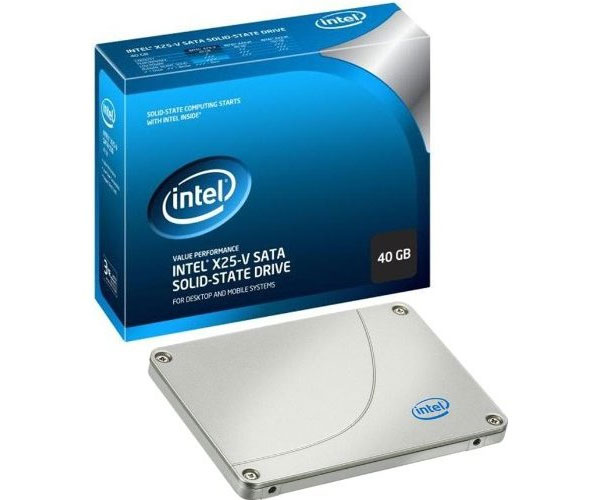 nine0003
nine0003
Testing
To test the speed characteristics, we assembled the following stand:
|
Motherboard |
GIGABYTE GA-790XTA-UD4 (Socket AM3, AMD 790X + SATA 3.0 + USB 3.0, ATX) |
|
Processor |
AMD Phenom II X3 720 (Socket AM3, 2.8 GHz, 7.5 MB cache) |
|
CPU cooler |
Thermaltake Sonic Tower (CL-P0071) + akasa AK-183-L2B 120mm |
|
RAM |
2x DDR3-1333 1024MB Kingston PC3-10600 |
|
Video card |
MSI R4850-2D1G-OC (Radeon HD 4850, 1GB GDDR3, PCI-E) |
|
Hard disk |
Samsung HD080HJ (80 GB, 7200 rpm, 8 MB, SATA-300) |
|
Optical drive |
ASUS DRW-1814BLT SATA |
|
Power supply |
Seasonic SS-650JT (650W, 120mm, 39. |
|
Operating system |
Microsoft Windows 7 32-bit0002 After a series of tests, we can see that the performance of the Intel SSD 320 Series is quite good. He feels confident enough among budget models. Of course, there is some lag in speed compared to the «top» solutions, which is primarily due to the fact that the controller has not actually changed architecturally, however, obsolete magnetic disks are significantly inferior in information reading speed. In terms of access and processor load times, the Intel 320 Series SATA II 2.5″ 80 GB SSD can be said to take a leading position, which is explained by the use of memory chips manufactured using the 25 nm process technology and it is they that allow for such high performance. The average operating speed for this drive option is 140 MB / s and is the maximum for compared devices that support SATA 3 GB / s. If we consider only the speed of writing information, then of course it has increased by 2 times compared to Intel X25-V, though with a capacity of 40 GB, however, this growth is not enough to make it possible to declare the leadership of the model, because even some magnetic hard drives are somewhat faster in this indicator. Conclusions As a result of the research, we can say that the owner of the Intel 320 Series SATA II 2.5 «with a capacity of 80 GB will get a very productive device, ideal for installing OS and software. Short access time and low processor load will allow use it as a storage medium in portable mobile devices such as netbook or tablet PC.The lower power consumption of SSD drives can somewhat extend the battery life of such devices.Excellent performance can increase the user’s comfort when performing the operation of reading information and speed up the process of loading the operating system. Of course, the speed of writing information is somewhat inferior to both the «top» solutions from other manufacturers of SSD devices and some HDDs, but the average operating speed of 140 MB / s looks very convincing for drives with a SATA 2.0 interface.0003 It is worth noting that the device allows you to ensure a high level of security of confidential information, because. Advantages:
Disadvantages:
Features:
Authors: Dmitry Garanzha We also suggest reading: Intel SSD 320 Series 600GB vs Kingston SSDNow UV400 960GB: What is the difference?Type of SSD drive. SSD cache Unknown. Help us offer a price. (Intel SSD 320 Series 600GB) DRAM drive Solid state drives/SSDs with DRAM flash memory use high-speed RAM as a buffer/cache. Performance is faster than non-DRAM SSDs that use slower NAND flash or system RAM (HMB). This is an NVMe SSD ✖Intel SSD 320 Series 600GB ✖Kingston SSDNow UV400 960GB NVMe SSDs use the PCIe interface, which has a higher bandwidth than the SATA interface. built-in memory Built-in memory is the built-in space for storing system data, applications, and user data in the device. With more internal storage, you can store more files and apps on your device. Storage type SSD Unknown. Help us offer a price. (Intel SSD 320 Series 600GB) The storage type determines how many bits of data are written to each memory location. These storage types include SLC (one bit per cell), MLC (two bits per cell), and TLC (three bits per cell). The fewer bits written to each cell, the higher the speed and reliability. nine0003 PCI Express (PCIe) version Unknown. Help us offer a price. (Intel SSD 320 Series 600GB) Unknown. Help us offer a price. (Kingston SSDNow UV400 960GB) PCI Express (PCIe) is a high speed expansion card standard that is used to connect a computer to its peripherals. |

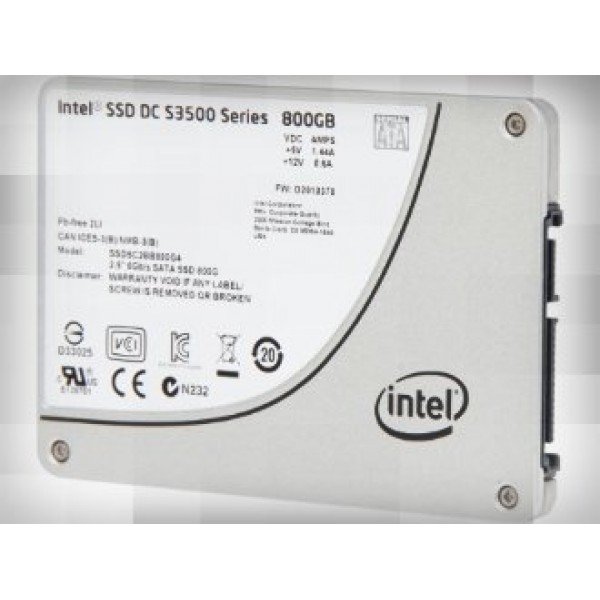 5″ (1.8″ available)
5″ (1.8″ available)  5 mm models available)
5 mm models available)  1dB)
1dB) 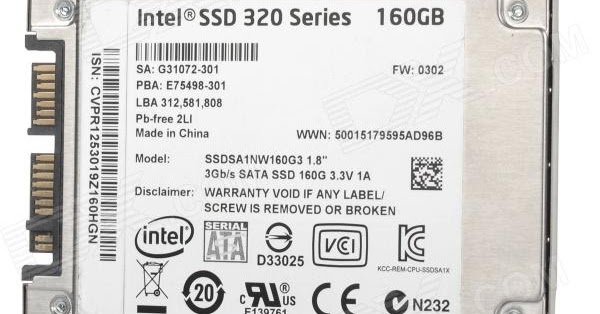 0003
0003  Intel 320 Series drives include AES 128-bit encryption. In addition, the drive has added data protection against internal system threats. To reduce the possibility of data loss, the Intel 320 Series SSDs provide protection in the event of a system power outage. In the event of an unexpected power outage, due to the charge of the energy available in the capacitors, the data in the cache memory is copied. nine0003
Intel 320 Series drives include AES 128-bit encryption. In addition, the drive has added data protection against internal system threats. To reduce the possibility of data loss, the Intel 320 Series SSDs provide protection in the event of a system power outage. In the event of an unexpected power outage, due to the charge of the energy available in the capacitors, the data in the cache memory is copied. nine0003 
 This results in much faster read/write speeds compared to SSDs using the SATA interface. nine0003
This results in much faster read/write speeds compared to SSDs using the SATA interface. nine0003 